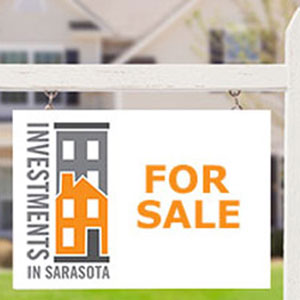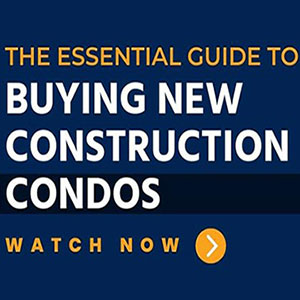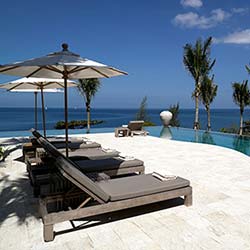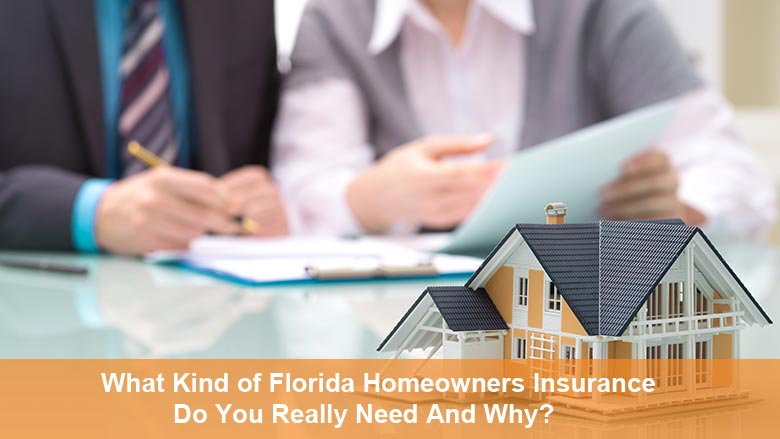
With so many types of insurance out there, it can be confusing to understand your choices. Here we share with you what is important to know regarding Florida homeowners insurance so you don’t get caught unprotected.
Here’s How It All Shakes Out
Florida Homeowner’s Insurance
Homeowners insurance helps pay to repair or rebuild your home and replace personal property due to a covered loss. A typical policy would include loss from theft and structural damage from fire, leaks, water discharge, fallen trees, or as a result of a storm.
In our experience, the majority of claims tend to be for water leaks; from air conditioning systems, water heaters, plumbing, and roofs, rather than the more dramatic possibilities.
Mortgage lenders usually require homeowners insurance as part of the mortgage terms. If you are getting financing you must at a minimum have a basic policy.
Most policies include coverage for the house itself, as well as for the property inside the house.
Key Components of the Standard Homeowners Insurance Policy Include:
- Dwelling
- Other Structures (shed, detached garage…)
- Personal Property
- Loss of Use/Additional Living Expenses (if your house is uninhabitable after a covered loss)
- Personal Liability (if someone claims you caused them injury or property damage)
- Medical Payments (to others)
When you own a condominium, the structure will usually be insured by the condominium association and you will pay a portion of that cost through your association fees. You may then only need a policy that insures the interior portion— also known as “improvements and betterments”, that is, of your unit and the contents of your condo.
Typically insurance policies include a “deductible” or excess, which is the amount of money that the homeowner contributes to the repair or replacement cost of the property. Generally, the higher the deductible/excess the lower the annual premium.
Be sure you thoroughly review the type of policy you purchase and ask any questions. It is important to have the proper insurance and understanding of what you purchased.
In addition to the standard coverage, you may want to discuss the relevance of additional coverage. Some examples include identity fraud, pet liability, pool cages, and screen enclosures, mold, sewer backup, or valuable items such as jewelry.
Wind Policy: What To Know So You Don’t Get Blown Away
 Wind or windstorm insurance generally is included as part of your Homeowners Insurance, but we want to discuss the topic a bit more thoroughly here as we consider it an important aspect of your policy to understand.
Wind or windstorm insurance generally is included as part of your Homeowners Insurance, but we want to discuss the topic a bit more thoroughly here as we consider it an important aspect of your policy to understand.
In much of Florida, we are susceptible to tropical storms or hurricane-force winds. As such, we guide our clients to ensure they are fully informed about the wind coverage that is included in their insurance package.
This includes providing them with information on how to help protect their home from damage, potentially reducing the costs of this portion of the insurance in the first place.
Protecting your home may even reduce the payout towards your deductible/excess.
Building Codes and Wind Policy: How Hurricane Andrew Changed Everything!
After Hurricane Andrew hit south Florida in 1992, municipalities around the state of Florida created higher standards to better protect homes from damage from winds and wind-borne debris. We refer to these as building codes.
These building codes include improved methods for attaching the roof to the house, reinforcing garage doors, installing windows that can withstand debris hurled at greater speeds, etc. The benefit of living in a home built to newer codes (or retrofitted with these features) is both a safer home and lower costs of insurance.
Older homes are more susceptible to wind damage as they are not made to resist as much wind as the newer builds. Examples of the types of damage that can occur from excess wind are having the shingles or roof ripped off, windows smashed from flying debris, garage doors or walls knocked down.
Many older homes have incredible charm, character, and features that newer homes may not have, so we are not discouraging you from looking at older homes, we just want you to know that there are measures you can take to help protect your home and reduce insurance costs.
Some examples would be to install new windows that have impact glass or hurricane shutters. You can have hurricane straps added to your roof system and also install a new impact-resistant garage door.
Building codes and building materials are both continually evolving. Have your Realtor, insurance professional, and home inspector help you understand the different trade-offs and costs associated with the different options.
Here’s an example to further explain this point:
You want to install a set of storm shutters (protection for windows and doors) and the cost is estimated at $6000, and you learn it will reduce your premium by $3000 per year. Most would consider this a good investment because the payback is 2 years. However, if the same shutters cost $150,000 then the payback would be 50 years and probably not a good investment.
The World Meteorological Association will name any storm that has sustained winds over 39 mph. With wind insurance, a standard deductible/excess is two percent for a named storm. For any other storm, the deductible you have pre-chosen in your contract will apply.
It is commonplace for the wind policy to use a percentage of the total coverage limit rather than a flat cost. For example, a wind policy for $250,000 with a two percent deductible/ excess means the insured pays the first $5,000 of repairs.
Again, you can choose the amount of deductible/excess based on where you are and how much you are willing to pay in premiums. Note, however, that sometimes the mortgage company may limit the amount of deductible/excess you are allowed to have on the policy.
Flood Insurance: How To Stay Above Water
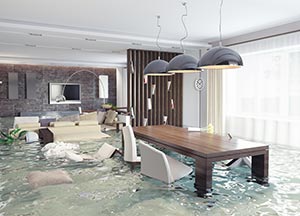
A flood insurance policy protects your home against potential flood damage. The question of whether a property is in a flood zone comes up all the time from buyers. Even within our own real estate profession, however, many do not know how to respond accurately.
In the past few years, there have been numerous legislative and rate changes for homeowners’ flood policies due to the National Flood Insurance Program (NFIP). Even information from the current seller of a property—especially if they have an older home—may not be applicable as they may themselves not be aware of how their property has been affected by the changes.
The bottom line? It is best to consult a trusted insurance professional at the very start of the due diligence process with any property you put under contract, to get an accurate flood insurance quote and explanation of flood zones.
When and Where It Can Flood
Let’s dive into some basic explanations to help you get oriented to this topic in very simple terms.
Anywhere it rains, it can flood!
There are two main types of flooding. The first scenario occurs when there is a tropical storm or hurricane that produces a tidal surge: such as when water from the Atlantic Ocean or the Gulf of Mexico moves over the beach and onto normally dry land.
The second happens with heavy, rapid rainfall when storm waters have nowhere else to go. In other words, the water drainage systems, lakes, rivers, and streams cannot absorb excess water fast enough and so it overflows onto land, streets, car parks, or neighborhoods and then into homes.
Other conditions such as an outdated or clogged drainage system, or new development (a building, car park, or road) may also change the ability of the land to absorb excess precipitation and can result in a flood.
What Are Flood Zones?
Every area in the United States is classified as a flood zone. What does that mean? Everyone lives in a flood zone — it’s just a question of the degree of severity of the risk. You may live in a low, moderate, or high-risk area.
While most perceive that the closer you are to bodies of water the greater the risk, there are more factors that come into play. You can be in an area of the mountains and experience flooding because the water flowing from higher levels pools faster than it can drain or be absorbed.
While there are many codes used to define flood zones, there are two main categories: Special Flood Hazard Areas and Preferred Flood Zones.
What is a Special Flood Hazard Area
Areas that are at high risk for flooding are called Special Flood Hazard Areas (SFHAs). Most, if not all barrier islands around Florida are considered SFHAs, as are areas close to the coast and other bodies of water.
If you are in an SFHA and you are financing your property, flood insurance is required. If you pay cash it is optional, but again highly recommended. We personally advise everyone to get flood insurance.
If you are in a Special Hazard flood zone, an Elevation Certificate will be required to determine how high above or below the Base Flood Elevation (BFE) you are.
BFE is the height, relative to the mean sea level, that has a one percent chance or greater of flooding in a given year as determined by FEMA and adopted by your local jurisdiction.
Rates will go up sharply for each foot you are below the BFE and will go lower for each foot you are above the BFE.
Where we live in Sarasota, all new homes within Special Hazard flood zones are required to be built with the first living floor at or above the Base Flood Elevation. This applies even to non-waterfront property.
Insurance professionals refer to Flood Insurance Rate Maps (FIRMs) to be able to identify which type of flood zone a property falls within based on its address. These maps are constantly being updated due to changes in geography, construction and mitigation activities, and meteorological events.
Therefore, even though you may find sites available to the general public online that give flood zone codes, for truly accurate information you must contact your insurance agent or mortgage broker. These are the two parties who by contract have access to the definitive mapping site.
Other Factors To Consider
Another complexity that may affect flood insurance rates is the value and location of appliances/equipment in and around the house that serves the home. Insurance companies may want to know how elevated the appliances are inside or outside the home, how many stories exist in the home, and where the main living areas are.
Florida homeowners are able to purchase flood insurance through various providers, but by virtue of the National Flood Insurance Program (NFIP), the federal government has standardized the rates so your annual cost will be the same irrespective of what insurance company you choose.
Currently, the maximum coverage available through the NFIP is $250,000 for the structure and $100,000 for the contents. The current annual cost if you are in a Preferred Flood Zone and is $414, with a $1000 deductible/excess for each claim.
One of our German clients purchased a home in 2013 on a barrier island about 200 meters from the Gulf of Mexico. Even though his home is in a Special Hazard Zone, he currently pays about $404 per year. The home was built in 2006 and the first living level (air conditioned space) is roughly eight feet above the base flood elevation.
Flood insurance normally requires a 30 day waiting period from the time you sign up before the coverage is effective. Exceptions are only made for certain circumstances such as if you’re purchasing a home and there is a loan being taken out to finance the purchase.
You can find more details about The National Flood Insurance Program at: www.floodsmart.gov
